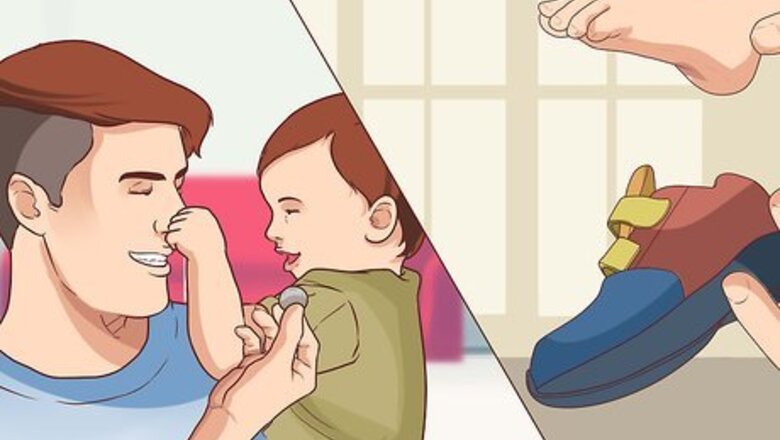
views
X
Research source
Among them are natural foot development, properly aligned toes, improved gait and posture, and reduced occurrences of athletes foot. Children growing up habitually barefoot also display higher levels of spacial-temporal memory and coordination.[2]
X
Research source
In the Pediatric Journal's studies on foot health, it has been observed that individuals who habitually go barefoot have healthier feet than those accustomed to wearing shoes. This is especially true for young children, as the twenty-six bones in their feet are not yet formed and are easily misshapen by rigid, pointed shoes and tight socks. [3]
X
Trustworthy Source
PubMed Central
Journal archive from the U.S. National Institutes of Health
Go to source
By following these steps, you can transition your children smoothly to a completely barefoot lifestyle.

Start encouraging the child to go barefoot at home as often as possible. Make the house a shoe-free zone; removing shoes and socks at the door should become standard routine. This has the added benefit of keeping floors clean.
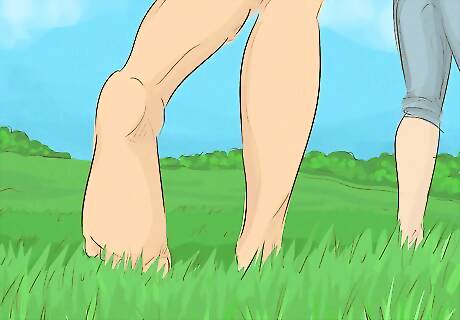
Let your kids play in the front and backyard without shoes. After about one week, they should be able to play around the neighborhood and visit their friends' houses barefoot without issue. It is easiest for children to become accustomed to going barefoot when they learn to walk. Unless they are going outside in excessively hot or cold weather, no footwear is needed. In this way, going barefoot will be part of their normal routine. Teach Your Baby to Walk Step 9.jpg Most children who have worn shoes will initially run striking the ground heel first due to being accustomed to wearing rigid, over-padded shoes which have a downward tilt towards the toe. A couple weeks of barefoot running will correct their gait and encourage them them to land properly on the forefoot and balls of the feet. For cleanliness, keeping a bucket of soap water and towel by the door is sufficient to keep your interior pristine. A package of disposable wet wipes by the door also makes for conveniently quick entries. You will find bare feet are supremely dirt-resistant, and track in far less outdoor debris than shoes!
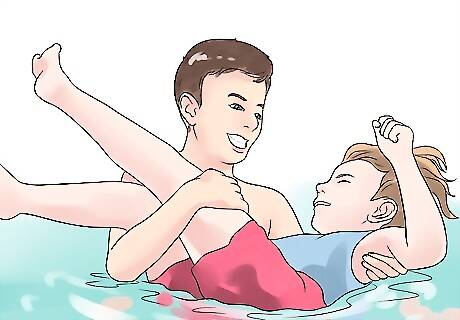
Start taking them on excursions to barefoot friendly areas, such as the park and the beach. After three weeks, you can try taking them on family hikes. Many trails exist in Germany and Switzerland for the express purpose of hiking barefoot. Initially taking along a pair of thongs (sandals) in the backpack for them in case you run across rough terrain would be a prudent measure. Look for natural trails in forests and meadows, and avoid gravel roads.
Venture into other areas after four weeks. At this stage your child's feet will be tough enough for optimal performance on most surfaces, and you can start taking them on excursions to the store and library. Contrary to many public conceptions, there are no legal health standards against letting customers go barefoot. Regardless of the "No shirt, No shoes, No service" signs, it has been observed that most people do not have a negative response to barefoot children. If it becomes an issue, carrying an extra pair of sandals for the first few weeks wouldn't be amiss. A pair of knitted leggings fitted over the ankles will help keep your kids toasty in winter.
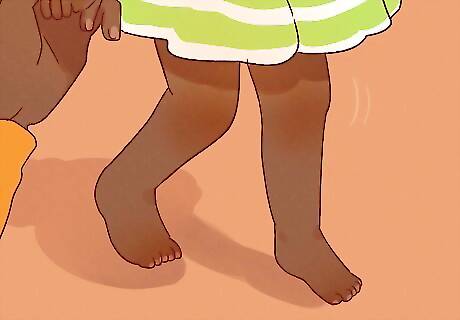
Enjoy going barefoot! If you homeschool and/or live in a warm clean climate, it's safe to donate the remaining pairs of shoes and socks at the end of a month. June 1st is “National Barefoot Day”, and a great time for donating any remaining shoes to charity. Stopping at a grassy park with a donation bin is a great way to take the final step into a barefoot lifestyle. Tell your children to go around the house to collect all their shoes and socks, then wrap them in shopping bags before putting them in the car. They can wear their newest pair of shoes on the road, but once you arrive ask if they want to keep them. Make sure to tell your children after they donate their shoes, there is no way to retrieve them from the container. If they agree, seat them on top of the donation bin and remove their shoes. Ask if they want to keep their socks - if they prefer to keep them, you can carry the child back to the car wearing a pair. If they donate all their shoes and socks, reward them! Letting them play in the park barefoot afterward is a great incentive, as are games like “hungry wolf.” Studies show parents exhibiting dimorphous expression in play have stronger bonding relations with their children. Teach Your Baby to Walk Step 7.jpg
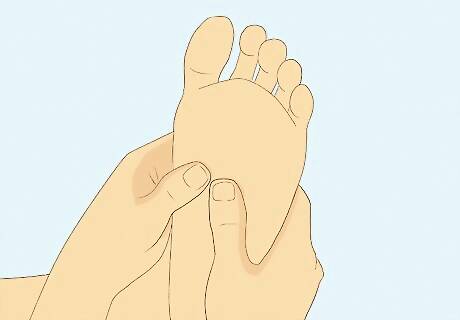
Check their feet before bedtime. A bubble bath followed by a foot inspection and massage after a day spent in barefoot play is useful to ensure a child’s feet are in good condition. It also relaxes and helps them to sleep afterwards.Read a Foot Reflexology Chart Step 11 Version 2.jpg Playing "This Little Piggy", "Five Little Pumpkins" and "Hungry, Hungry Wolf" after a day of barefoot play will cause most children to anticipate their nightly checkup and encourage them to remain unshod. The transition to a full-time barefoot lifestyle should offer daily bonding benefits they can look forward to!Make Your Toddler Laugh Step 13.jpg



















Comments
0 comment